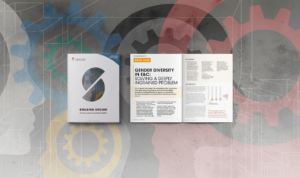New ecosystems are superseding conventional business models in many industries. The recent global pandemic has accelerated digital transformation in sectors that we couldn’t have foreseen even a few months ago. As this evolution takes shape, the roles of CIO and CDO are at the forefront of digital transformation. But this isn’t digital transformation as we know it. Moving from paths to platforms requires technology to fundamentally reinvent the business as digital-first. The role of the CIO and CDO is to bring the right tech to the table.
What do HIVE, Tesla and Pony.ai have in common? They are all successful platform-based businesses operating within an ecosystem rather than through a traditional supply chain. Earlier this year, Savannah Group hosted the Leading Edge Forum (LEF) along with members of our CIO and CDO network to discuss how technology can enable more conventional businesses to operate in the ecosystem environment.
Digital transformation or disruption of the industry?
Digital transformation starts with technology leaders; but what are companies looking for from their CIO? A newly appointed CIO will often be obliged to start with firefighting to get internal systems in good shape; cloud, post-cloud, Saas and perhaps O365 are common features. When it comes to what’s considered as transformation, CEOs talk about serverless first, self-service tech and cyber security. But, viewed through a wider lens, these are purely the IT foundations.
To truly disrupt an industry CIOs need to look for digital gamechangers, new models and entrants, new industry platforms and ways to continually improve the customer journey through technology. This level of transformation shouldn’t be confused with the modernising of an IT infrastructure. True digital transformation means that the end goal is to create a fundamentally different business.
“Modern ecosystems orchestrated by platform businesses are so powerful because they can construct customer centric combinations that traditional firms cannot.”
What is a platform business model?
Digital-second? Digital-first? Or platform business? The smart home app and platform-based business HIVE, has evolved from digital start-up to a household name. However, in its early days HIVE had its fair share of hurdles to overcome. How could the founders explain their offering to investors when it was so far removed from a conventional business model? Ten years later and almost every market shows signs of these new and more complex ecosystems.
More recently, Toyota invested more than $400m in autonomous vehicle technology innovator pony.ai. Why would a global automotive giant invest in a two-year old start-up? To gain access to planning and control software, HD mapping, infrastructure, vehicle platforms and more, from the 120 companies in pony.ai’s ecosystem. In a uniquely defensive move, Toyota has bought into a proposition that reengineers the customer journey through technology.
Looking to the future, Amazon Care, a virtual in-person healthcare offering for employees, provides an app, dashboard, and logistics system for the delivery of medication. Through Amazon Care, Amazon is building a new two-sided marketplace purely through a platform-based ecosystem.
What’s the difference?
How does the nature of a platform business differ from that of a traditional supply chain organisation?
- They’re agile. And they want to work with supply chain partners who can move just as quickly. Platform businesses don’t partner with bureaucratic slow-moving traditional suppliers and neither do they want to incorporate any sluggish players into their ecosystem.
- Power is shared. Even when a start-up platform partners with a multi-national (think pony.ai and Toyota) the start-up has an equal share of the power. Everyone has to work together to co-evolve a shaping strategy. There is no top-down hierarchy in the ecosystem.
- They’re tearing up the traditional contract. Platform businesses strike up very different commercial contracts to traditional supply chains. Contracts with partners are more likely to be for 12 months rather than for five years. Contract details differ too and are more often built around gainshare or guaranteed subscription levels rather than adherence to cost.
- Churn is the norm. Participants in the ecosystem of a platform business typically have a short lifespan. Participants will exchange data, materials, products or people in a systematic fashion but for a short period of time. There is a 30 – 40% churn of participants in an ecosystem compared to 5 – 10% churn in traditional supply chains.
- Competition is a blurred line. Contracts between partners in the ecosystem frequently combine aspects of both competition and collaboration. These unconventional relationships can provide access to complementary products and capabilities.
- They let go of control. A platform business isn’t set up to manage the supply chain and proposition all the way through the customer journey. The platform business mindset enables others to add to your proposition to customers by letting go of some of the control.
- They’re in search of excellence. Take Tesla for example. It’s clear from their mode of operating that Tesla is more passionate about developing autonomous driving systems than it is in selling cars.
- Their intellectual property (IP) is no secret. Think of Tesla; its IP is available, but competitors just can’t keep up with the pace which is how the business maintains its edge. Tesla is now bringing more of its ecosystem in house to maintain the speed of innovation.
- Speed creates value. Platform businesses know that there is mutual value if you can move quickly enough. The processes and layers of traditional pipeline businesses are at odds with the velocity of technology and consumer behaviour. Platforms use their speed to quickly create competitive advantage.
- And of course, technology is key to their success. Operating in the ecosystem of the platform business means being forward looking when it comes to tech. The Leading Edge Forum estimates that these businesses are placing bets on the next 10 years of tech development.
“The challenge for traditional system integrators is to adapt their existing culture and processes.”
Leading your business into the new ecosystem
If you’re leading business transformation in a traditional pipeline business, then the platform model may feel at odds with your strategy. How can you transform the business while keeping business as usual running? How can you extend the business digitally to reach more of the customer journey without having to orchestrate a new and complex operating ecosystem? Whilst operational and commercial challenges exist, many traditional businesses are venturing into the new territory of the platform world, led by their CIO or CDO.
“Traditional businesses have no choice. They must, at the very least, extend their pipeline business model to participate in new platform ecosystems.”
But not every organisation aspires to becoming, or acquiring, a platform. For some businesses, partnerships and joint ventures provide the best route to access ecosystems created by others. For organisations that do see a platform-based future, some ‘digital-second’ firms are entering the platform world by working with digital-first start-ups, including their own internal ventures. This has advantages for both parties. Despite wanting the agility of a start-up environment, tech start-ups can benefit from the scale, brand, data and loyal customer base of a more established business.
Whatever form digital transformation takes, our discussion highlighted that any organisation can create a pathway to participation in the platform ecosystem, with some creative thinking from their technology leaders.
Partner in Savannah Group’s Digital and Technology Leaders Practice hosted the Leading Edge Forum (LEF) for this discussion. Cathy is co-creator of the Savannah CIO Development and CIO mentoring programmes.




